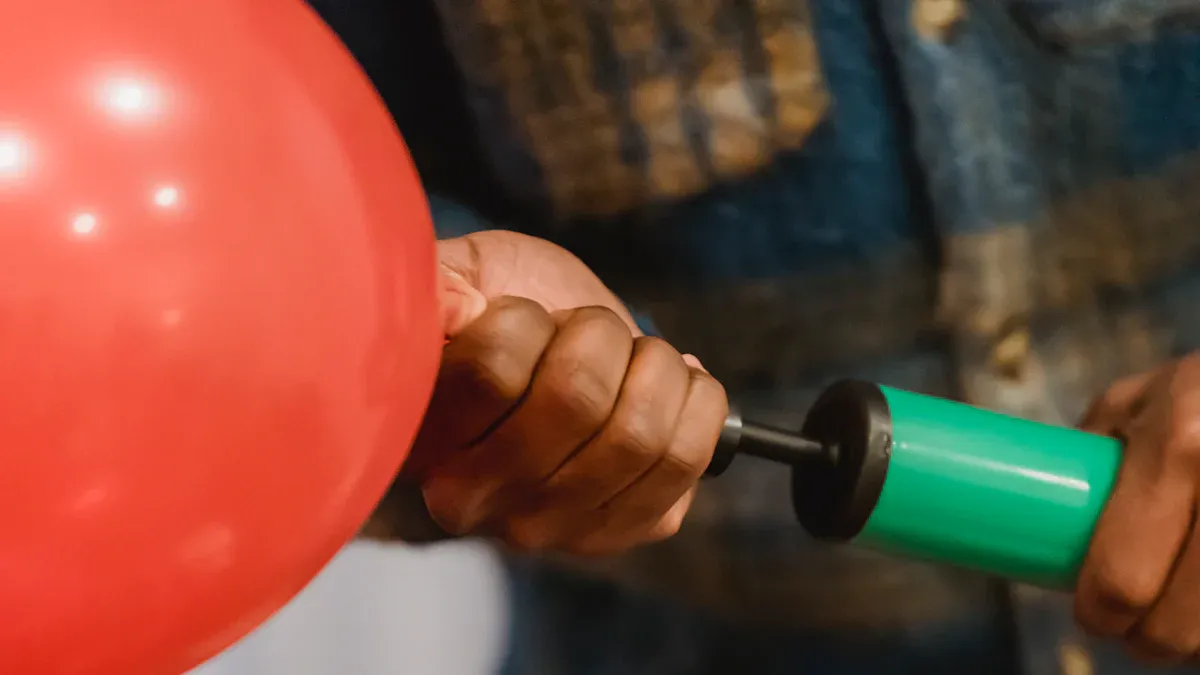The finest part of every child’s birthday party is the balloons, and let’s face it: every single one of us has a happy memory associated with the time we spent playing with biodegradable balloons. Going to a party when there aren’t any balloons would be a really strange experience. The majority of the time, balloons are only utilized for decorative or fun purposes.
Balloons are a favorite for children of all ages, and even adults can’t help but have fun playing with them. However, it is of the utmost importance to determine whether or not this amusing product, which is enjoyed by both children and adults and may serve a variety of functions, is biodegradable. Or if the act of disposing of it is detrimental to the natural environment.
Are Latex Balloons Biodegradable?
Even though the process is quite gradual, latex balloons can be considered biodegradable. The biodegradation process for a latex balloon might take anything from three months to four years. However, there is the possibility that the balloons will do some damage to the surrounding ecosystem before they entirely biodegrade.
Individuals have been releasing latex balloons into the air due to the fact that they are biodegradable, which is a misconception that has caused significant bad impacts. Many people have made this mistake. As a result of consuming these deflated latex balloons, the bodies of a great number of animals have been found dead.
Even if they are advertised as being biodegradable, this does not always indicate that they are completely harmless to the environment. Many of the latex balloons that are manufactured today and are marketed as being biodegradable are not, in fact, biodegradable.
Many guidelines pertaining to health and safety have been violated by fans of balloons in order to maximize their potential earnings from the selling of balloons. This is the primary reason why there are limitations placed on the usage of balloons in large quantities.

Are Biodegradable Balloons Bad For the Environment?
In days gone by, balloons were made using the bladders of animals, specifically those of pigs and other livestock. They’ve certainly come a long way since then, which is cause for celebration. Although a pig’s bladder would biodegrade faster than a latex balloon, at least it wouldn’t take as long.
These days, biodegradable balloons are produced using natural latex, which, as it breathes, degrades over the course of time. The issue is that balloons are not created entirely out of natural latex, as is sometimes claimed. They add chemicals because natural latex may deteriorate very fast, which is why they do it.
A plasticizer is mixed in with the latex in order to boost the elasticity of the balloons, encourage flexibility, and lessen the brittleness of the mixture of latex and rubber. There are additional colorful dyes available; natural latex is transparent, which does not allow for an interesting balloon design.
In addition to that, they have additional compounds in them that could be harmful to the environment. Although these compounds do not pose a threat to human health, they do impair the balloons’ capacity to biodegrade, which has a negative impact on the surrounding ecosystem.
The production of latex does not involve the killing of any animals or plants, which is one of the many reasons why it is considered to be an environmentally friendly material. Latex is collected without causing any damage to the trees that produce it; as a result, its manufacture is both carbon-negative and environmentally friendly.
There have been a lot of people who have questioned whether or not latex has any negative effects on the environment. Water and a variety of proteins found in nature are the primary components of latex, which is an entirely organic and natural product. The tree utilizes the fluid to defend itself against potential health risks, such as bacteria, mold, and fungi as well as insect and fungal infections.
Because it is self-renewing, the tree is not put in any danger when it is harvested because it does not lose any nutrients. The use of latex in any capacity does not harm the natural world. To begin, the extraction method is totally sustainable and kind to the environment in every way.
How Long Does Latex Take To Biodegrade?
There is no set period of time that can be predicted for how long it will take for latex to biodegrade. Different rates of biodegradation are experienced by organic, natural, and synthetic latexes. On the other hand, the complete biodegradation of organic latex will take the fewest number of years (between one and four).
It will take natural latex; for instance, it will take fifty to one hundred years for a condom composed of natural latex to biodegrade entirely. This means that natural latex will be required. In addition, it will take a synthetic latex condom of the same mass five hundred years to totally decompose in the environment.
However, if any of the three types of latex come into touch with pollutants and poisons, the process of biodegradation would take far longer. Therefore, the process of biodegradation will take longer than four years if organic latex that has been treated with chemicals.
Conclusion
Although there may be minor distinctions, latex, and rubber have been used interchangeably for quite some time. Rubber is the finished product, whereas latex is the liquid form harvested from rubber plants.
This article should have shown you how to safely utilize Latex balloon and dispose of old products without harming the environment.
































